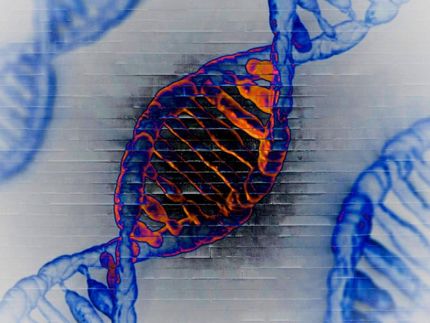Jumping Genes Provide Extensive “Raw Material” for Evolution, Penn Study Finds
Advertisement
Using high-throughput sequencing to map the locations of a common type of jumping gene within a person’s entire genome, researchers at the University of Pennsylvania School of medicine found extensive variation in these locations among the individuals they studied, further underscoring the role of these errant genes in maintaining genetic diversity.
The investigators determined that any two peoples’ genomes differ at roughly 285 sites out of the 1139 sites studied. These results were found by scanning the genomes of 25 individuals, 15 of which were unrelated. They report their findings in Genome Research.
Jumping genes – also called transposons – are sequences of DNA that move to different areas of the genome within the same cell.
“The significance of this work is that there is much more diversity in our genome due to insertions by this family of transposons than previously thought,” said co-author Haig Kazazian, MD, Seymour Gray Professor of Molecular Medicine, in the Penn Department of Genetics. “This movement of genetic material provides the raw material of genetic evolution, and it doesn’t take into account the insertions that we believe occur outside of the sperm and egg cells studied in this project.”
Transposons are a source of diversity within a species’ gene pool, with implications on many levels. For example, slight changes in genes help organisms adapt and survive in new environments, and populations with genetic diversity are less vulnerable to disease and problems with reproduction. Insertions into certain spots in the genome can also cause cell function to go awry, so understanding their placement and variation in the human genome is important for a fundamental understanding of disease. Insertions can cause many genetic diseases, such as hemophilia and Duchenne muscular dystrophy, and may play a role in the development of cancer.
Retrotransposons are the major class of jumping genes, with the L1 family the most abundant type of retrotransposon in the human genome. L1s comprise about 17 percent of the human genome and were the subject of the Genome Research paper.
Eventually, continuous jumping by retrotransposons expands the size of the human genome and may cause shuffling of genetic content. For example, when retrotransposons jump, they may take portions of nearby gene sequences with them, inserting these where they land, and thereby allowing for the creation of new genes. Even otherwise unremarkable insertions of L1s may cause significant effects on nearby genes, such as lowering their expression.
Retrotransposons move by having their DNA sequence transcribed or copied to RNA, and then instead of the genetic code being translated directly into a protein sequence, the RNA is copied back to DNA by the retrotransposon’s own enzyme called reverse transcriptase. This new DNA is then inserted back into the genome. The process of copying is similar to that of retroviruses, such as HIV, leading scientists to speculate that retroviruses were derived from retrotransposons.
The team also found that on average 1 in 140 individuals have obtained a new L1 insertion from their parents. When all retrotransposon insertions, including L1 and others, are considered about 1 in 40 individuals have received a new insertion from their parents.
The current study counted insertions in the heritable germ cell line, that is in egg and sperm cells. “The real elephant in the room is the question of the incidence of somatic insertions, insertions in cells that aren’t eggs or sperm” says Kazazian. “We don't yet know the incidence of those somatic insertions.”
Because the insertions detected in this study and others like it are present in some individuals and not others, there is the possibility of association with genetic disease. Future studies in the Kazazian lab funded by an ARRA stimulus grant through the National Institutes of Health will develop techniques to uncover such associations using these retrotransposon insertions as genetic markers.



























































